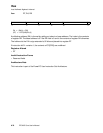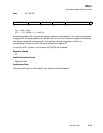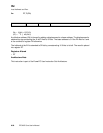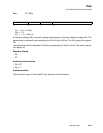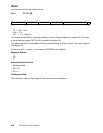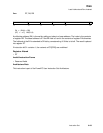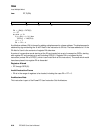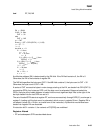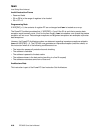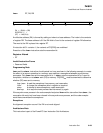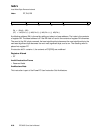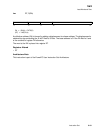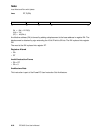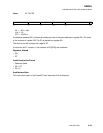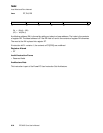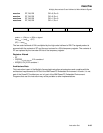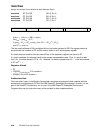
Instruction Set 9-87
lswx
Load String Word Indexed
lswx
Load String Word Indexed
EA ← (RA|0) + (RB)
CNT
← XER[TBC]
n
← CNT
R
FINAL
← ((RT + CEIL(CNT/4) – 1) % 32)
r
← RT – 1
i
← 0
do whilen>0
ifi=0then
r
← r+1
ifr=32then
r
← 0
if (((r
≠ RA) ∧ (r ≠ RB)) ∨ (r=R
FINAL
)) then
(GPR(r))
← 0
if (((r
≠ RA) ∧ (r ≠ RB)) ∨ (r=R
FINAL
)) then
(GPR(r)
i:i+7
) ← MS(EA,1)
i
← i+8
if i = 32 then
i
← 0
EA
← EA+1
n
← n–1
An effective address (EA) is formed by adding an index to a base address. The index is the contents
of register RB. The base address is 0 if the RA field is 0 and is the contents of register RA otherwise.
A byte count CNT is obtained from XER[TBC].
A series of CNT consecutive bytes in main storage, starting at the EA, are loaded into CEIL(CNT/4)
consecutive GPRs, four bytes per GPR, until the byte count is exhausted. Bytes are loaded into
GPRs; the byte having the lowest address is loaded into the most significant byte. Bits to the right of
the last byte loaded in the last GPR used are set to 0.
The set of consecutive GPRs loaded starts at register RT, continues through GPR(31), and wraps to
register 0, loading until the byte count is exhausted, which occurs in register R
FINAL
. Register RA is
not altered (unless RA = R
FINAL
, which is an invalid form of this instruction). Register RB is not altered
(unless RB = R
FINAL
, which is an invalid form of this instruction). Bytes which would have been loaded
into registers RA or RB are discarded.
If XER[TBC] is 0, the byte count is 0 and the contents of register RT are undefined.
If instruction bit 31 contains 1, the contents of CR[CR0] are undefined.
Registers Altered
• RT and subsequent GPRs as described above.
lswx RT, RA, RB
31 RT RA RB 533
0 6 11 16 21 31



